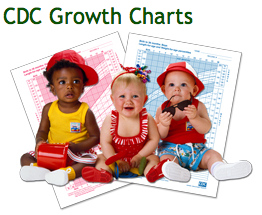|
|||||||||||||||
|

CLICK ON weeks 0 - 40 and follow along every 2 weeks of fetal development
|
||||||||||||||||||||||||||||
|
CBD in cannabis shows promise for severe epilepsy Wikipedia: Cannabidiol (CBD) is one of at least 85 active chemicals identified in cannabis that repress brain neurotransmissions. It is a major phytocannabinoid, accounting for as much as 40% of extract from cannabis and considered to have wider medical application than tetrahydrocannabinol (THC). The first and largest CBD study presented by GW Pharmaceutical on Epidiolex (cannabidiol) involved 261 people, predominantly children, who have severe epilepsy and did not respond adequately to other treatments. The average age of participants was 11. (abstract 3.034)
Adverse events occurred in more than 10 percent of participants with the most common being somnolence, diarrhea and fatigue and led to discontinuation in 4 percent of patients. Thirty-four percent of participants reported serious adverse events of which 5 percent were considered treatment related including altered liver enzymes (n=4), status epilepticus (n=4), diarrhea (n=4) and others. Twelve percent withdrew from the study for lack of efficacy.
A related second study authored by Michael Oldham, M.D., MPH, formerly at the University of California San Francisco (UCSF) and currently at the University of Louisville, explored the long-term efficacy of Epidiolex. This study followed a subset of the first population at UCSF Benioff Children's Hospital San Francisco, with an average age of 9, for one year. (abstract 2.296) Oldham: "The CBD as an add-on therapy reduced seizures by half for a third of the patients in the first 12 weeks of the study. This substantial improvement was maintained by 40 percent of participants for the entire 12-month period showing strong promise that CBD can be effective in controlling seizures." A third preclinical study explored anticonvulsant and tolerability of CBD in animals models. Using the Anticonvulsant Screening Program (ASP), researchers used four well-established acute seizure models to find CBD exerted significant anticonvulsant effects and was well-tolerated in rodents. This study was provided as a free service by the National Institute of Neurological Disorders and Stroke ASP, and was conducted at the University of Utah. (abstract 3.397) A fourth study, led by Misty D. Smith PhD at the University of Utah , explored how CBD interacts with five different AEDs in animal models of seizure. That study helps substantiate the effects of CBD in combination with common AEDs, including carbamazepine, valproate, levetiracetam, clobazam and lacosamide. The interactions between these drugs could mean the drugs work well together. The drugs tend to enhance each other's effects (synergism); or antagonize, when the combinations reduce effectiveness. (abstract 1.215) Smith compared three fixed dose ratio combinations of CBD in order to rapidly assess the effectiveness of each combination against limbic seizure. The work revealed significant synergistic interaction between CBD with levetiracetam and significant antagonistic interactions between fixed dose-ratio combinations of CBD with clobazam and CBD with carbamazepine. Added Smith: "By identifying these ... interactions between CBD and other ASDs, we are gaining a better understanding of their natures, which will help optimize therapeutic safety and efficacy for CBD going forward." About the American Epilepsy Society: |
Dec 10, 2015 Fetal Timeline Maternal Timeline News News Archive
|
||||||||||||||||||||||||||||


